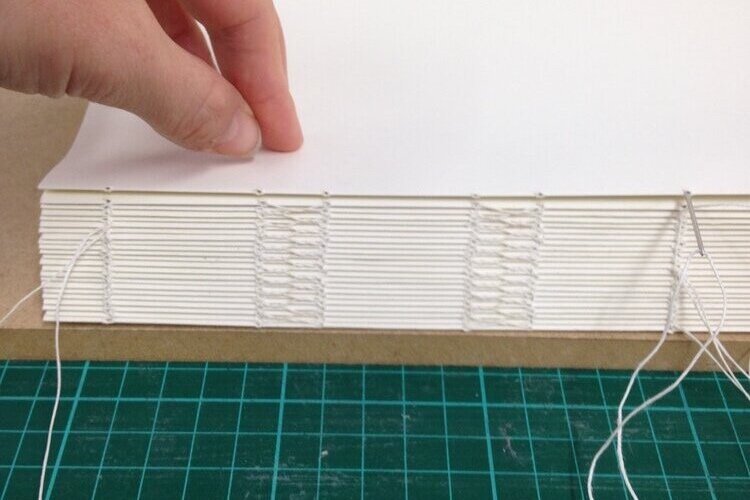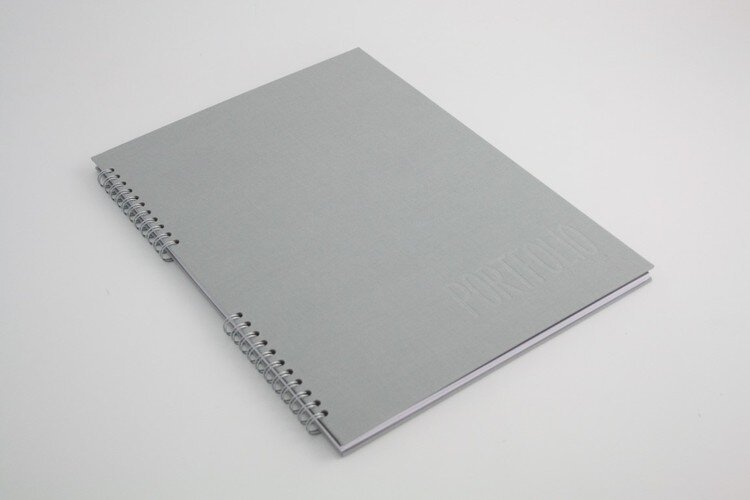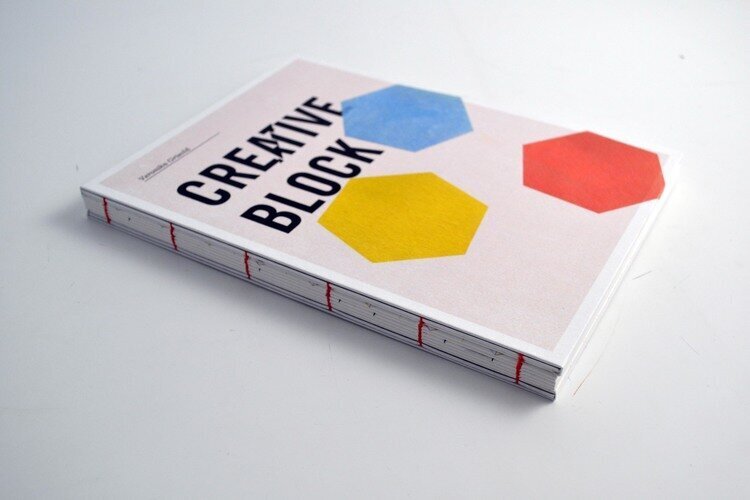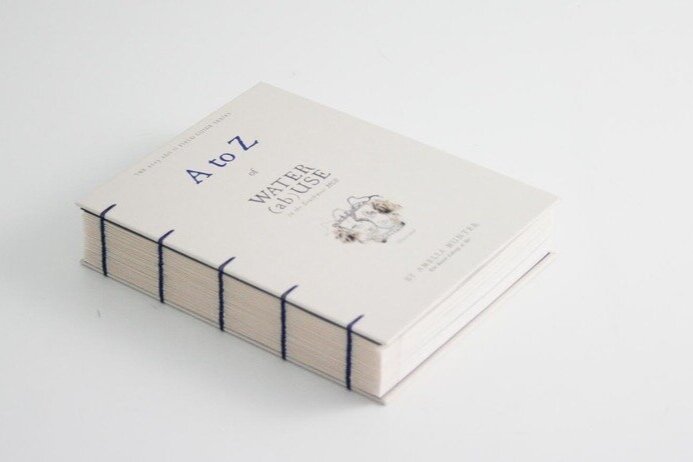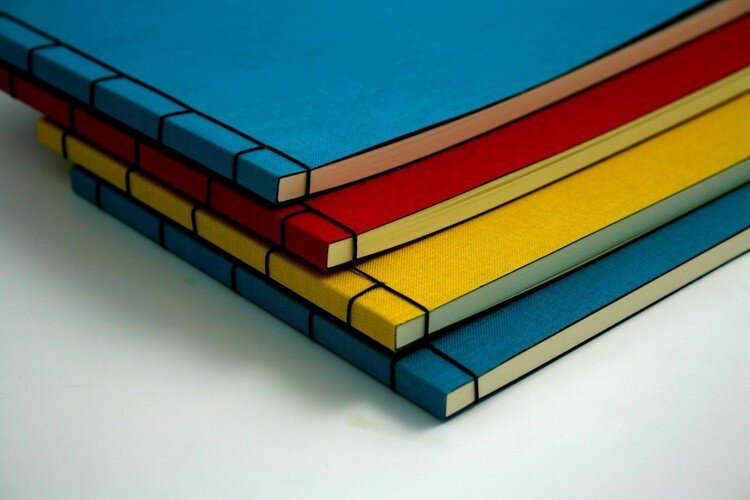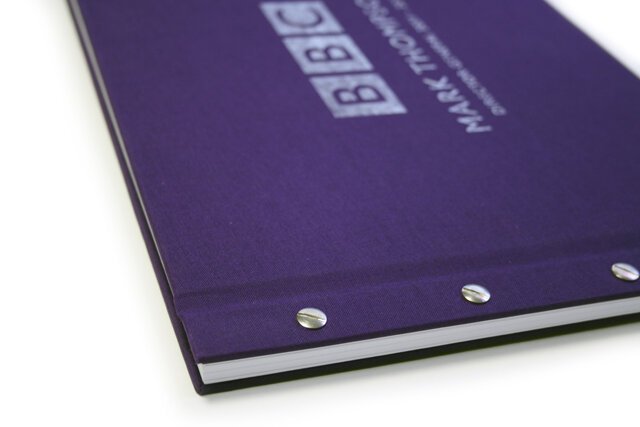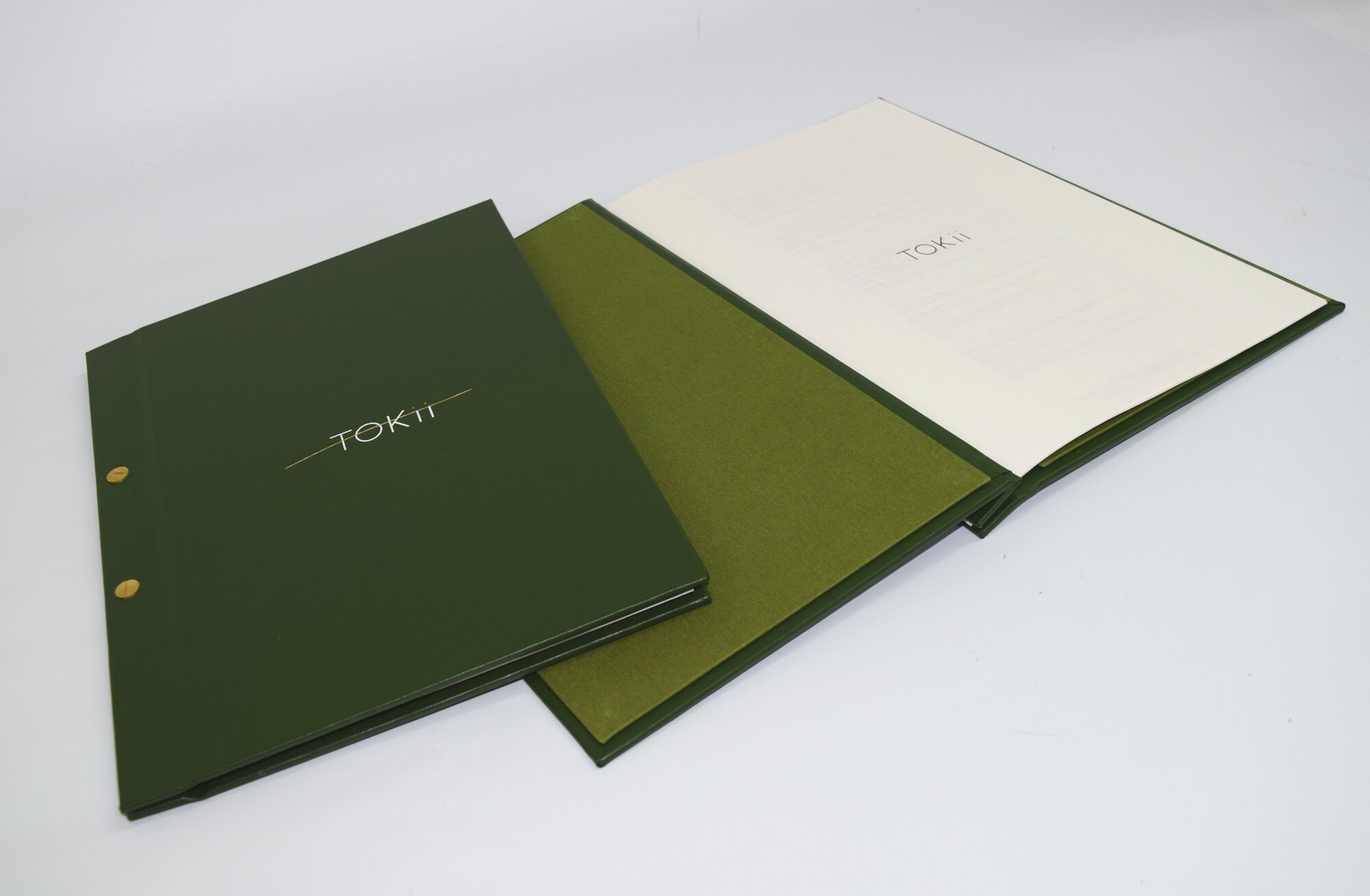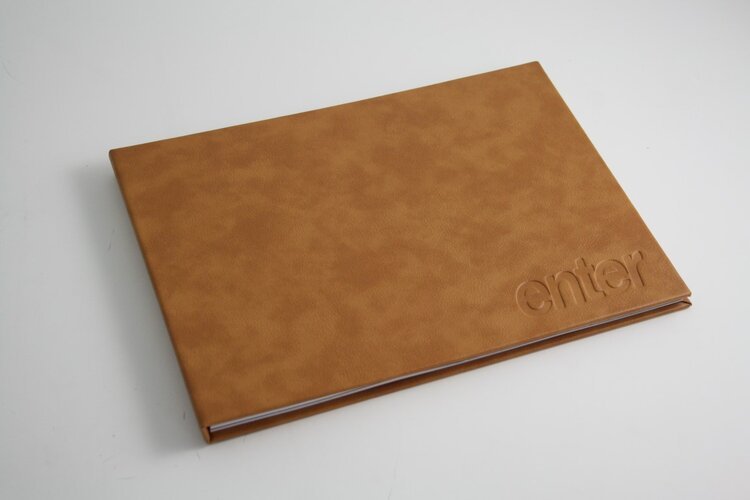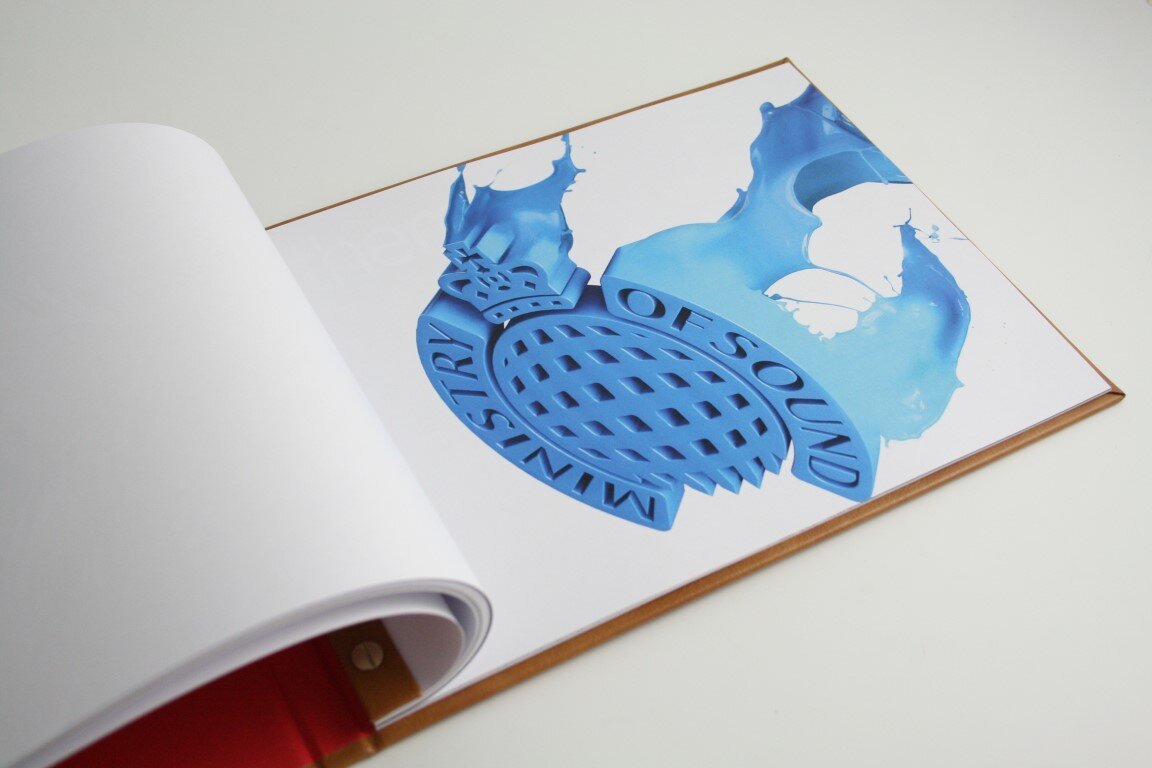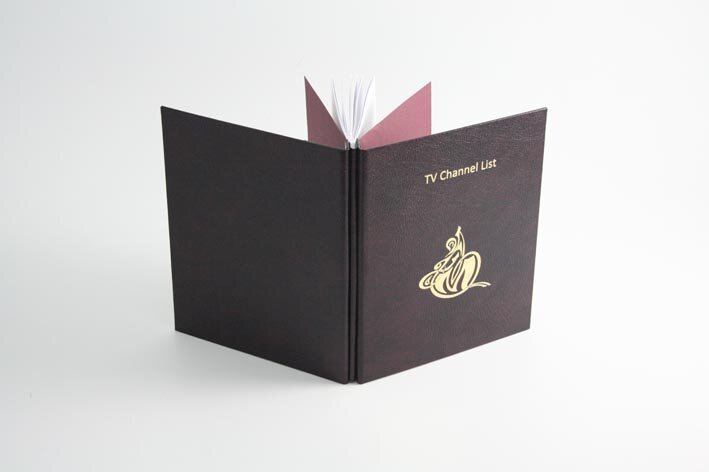Types of Binding
There are many different types of binding methods available for all types of book, we thought we’d help unpick some of the terms and types commonly used.
First of all let’s look at the most common types of binding:
Saddle Stitched/ Stapled Booklets
Saddle-stitching - It's probably the easiest and the most economical binding method. Pages are folded, creased and stapled together (not by an ordinary stapler - a stapler with long jaws, designed specifically for saddle stitching). We often see this type of binding used for lookbooks, booklets, and magazines that have a smaller page count.
PUR Bound Book
Perfect Binding - a form of binding most often used in the types of books you find yourself reading on the train or at home, otherwise known as paperback or softcover books. Perfect bound books can also be useful for manuals, catalogues, and annuals. Pages are folded into sections (termed signatures in the industry) and glued with a heavier printed wrap-around cover into the spine using a strong adhesive. It's not the strongest form of binding and your book won't open flat; you'll know a book has been poorly perfect bound when your pages start falling out.
Perhaps you've heard the term PUR perfect bound? Here the binding is much the same, but a stronger adhesive is used, and is what we would recommend if perfect binding is the style you're going for. Generally, a hardback covered book would only be PUR perfect bound, as the glue used to form your paperback or softcover books won't adhere to the hard case spine very well.
Section Sewn - Your most secure binding method. Here pages are folded together into sections (signatures). Each section is then sewn into the following section along the spine. The spine is then glued together for extra support and the cover then attached. A Section Sewn book, regardless of page count will be able to lay flat.
Section - Sewing
Wire Binding/ Spiral Binding - Most of you would have bound a document throughout school or university using one of these methods. In a nutshell, holes are punched through the pages of your document near the bound edge, and held together using either wire or plastic coils. If you're after a something a little fancier, a document can be wire bound inside a hard cover, cloth or printed case.
Cased-in Wiro Binding - If you would like to hide the wire from the outside there is a solution known as a Cased-in Wiro. This technique, however, is more involved than your traditional wiro bound document, but the final result looks lovely as you can see.
Cased in wiro Cover
Let’s move on now and take a look at some more bespoke hand-made book binding options.
Pamphlet Binding uses a single section (signature) and is sewn with a running stitch down the spine; often an alternative to stapling (saddle stitch) but in our opinion leaves you with a much more elegant finish.
Coptic Binding – A non-adhesive form of binding that stems from bookbinding methods employed by ancient Egyptians! Signatures are sewn through their folds, and attached to one another and again sewn through two loose covered boards with a chain like stitch across the spine.
Japanese Binding – This is useful for binding single sheets of paper. You can have either a soft back or hard back cover which attaches to the text block with decorative stitching along the spine. Another option using this decorative sewing technique is to only expose the stitching on the inside of the book. This is achieved by turning in the edge of the cover boards to create a hinge; the book is then sewn from the inside. It is recommended to use Japanese style binding for large or landscape format books as the binding requires a large margin.
Screw-post Binding - There a few ways you can use screws to bind your documents and it's a popular choice for portfolios as it leaves you with the ability to add or remove pages.
Option 1 – Screws are used to hold the pages together between two covering boards.
Option 2 - Pages are screwed into a hard case with a square spine which unfolds to reveal the screw posts inside. The pages are screwed onto the back board of the case.
Option 3 - The binding screws are not visible on the front, or back cover. Achieved, by turning in the edge of the cover boards to create a hinge allowing the covering boards to sit over the screws. A spine piece of material is added and the screws are only visible when the book is opened.
This isn’t the end of the multitude of binding options out there but it is certainly plenty to get you going.
We hope our guide has been helpful and if you are a businesses looking for a quality print and binding service please get in touch.




